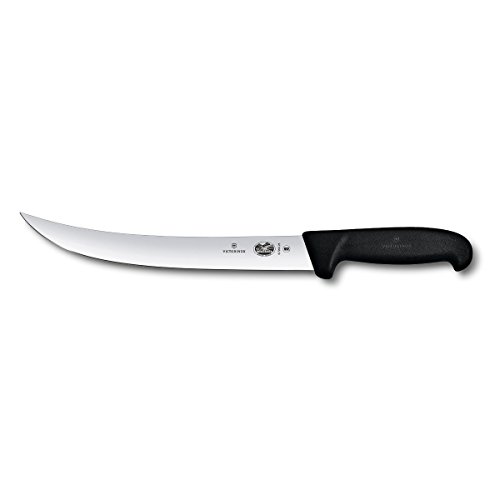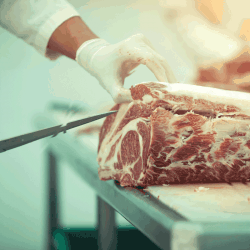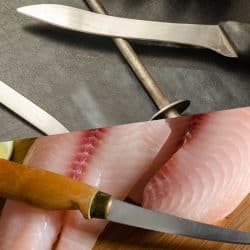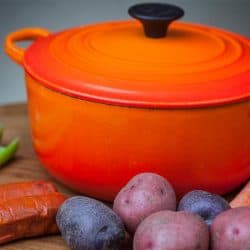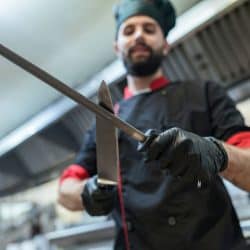Did you purchase a new meat knife set? If so, you may be wondering what the difference is between a breaking knife and a boning knife. To help you, we researched these tools, and here's what we found.
A breaking knife and a boning knife are dissimilar in several aspects. They differ in size, flexibility, purpose, ideal user, and price.
Kitchen knives are your ally against a pile of food prep tasks every day, from peeling to dicing. This article will cover the uniqueness of breaking and boning knives. We'll also discuss their uses, storage, and other questions. Continue reading to forge your basic knife knowledge.
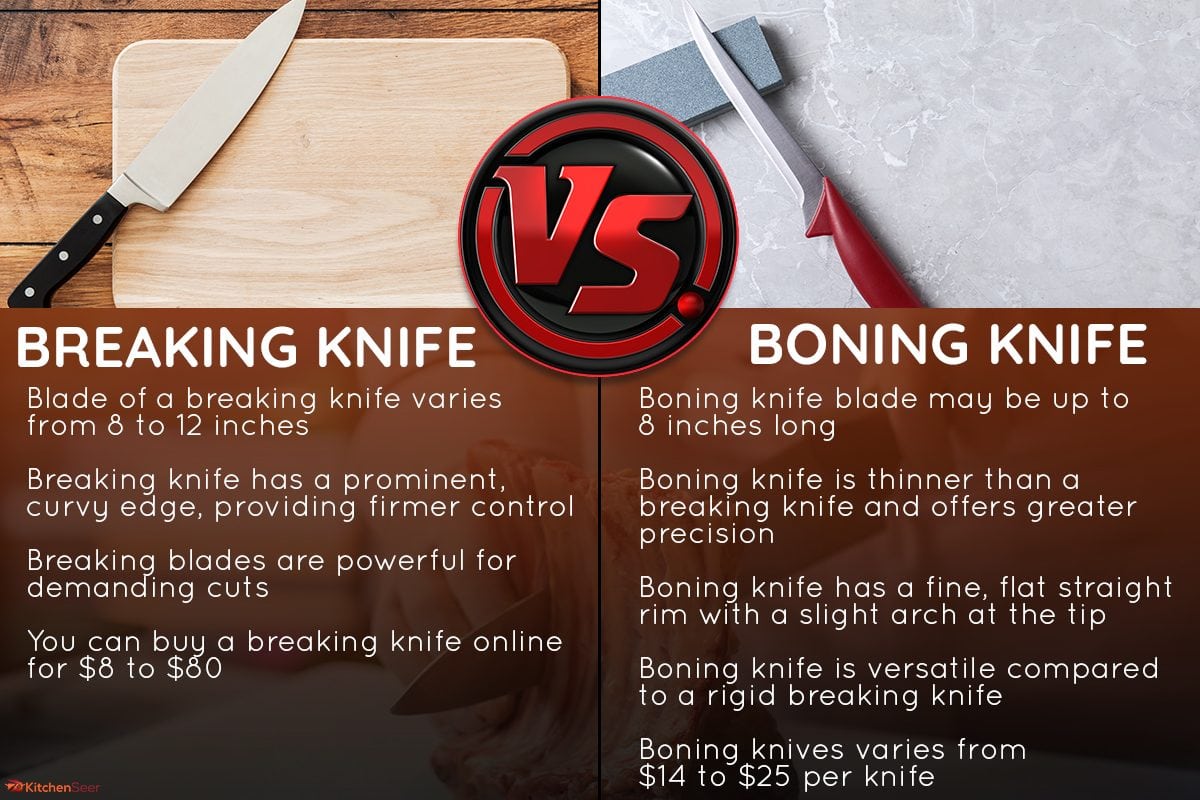
What Is The Difference Between A Breaking Knife And A Boning Knife?
Let's dive into the various areas where breaking and boning knives differ.
Length and Weight
The blade of a breaking knife varies from 8 to 12 inches. In contrast, a boning knife blade may be up to 8 inches long.
The overall weight of your utensils depends on blade size. The longer it is, the heavier the knife will be. The handle type also affects it. Aluminum, wood, and stainless are the prevalent materials for the handle.
Breaking knives are more lightweight than other butcher tools, but they are strong.
Blade Design
A boning knife is thinner than a breaking knife and offers greater precision. Remember, thinner blades drag less.
A breaking knife has a prominent, curvy edge, providing firmer control, while a boning knife has a fine, flat straight rim with a slight arch at the tip.
Flexibility
With flexibility, a boning knife is versatile compared to a rigid breaking knife. For instance, it can work as a substitute if you don't have a fillet knife. It's great for preparing fish or seafood.
However, a boning knife is stiffer or semi-flexible. Despite being inflexible, breaking blades are powerful for demanding cuts.
Strength
Each knife can display superior performance when you use it for its prime purpose and strengths.
A breaking knife is classified as a butcher knife. It is strong enough to cut hard meat chunks into smaller quantities without the user having to exert extra effort. It's good for the following:
- Removing animal skin
- Dicing pork, frozen flesh, or steak portions
- Detaching bones and joints
- Crushing small bones, cartilage, and tough skin
- Splitting the fat layers from the meat
- Cracking lobsters, crabs, or other shellfish
The primary use of a boning knife is meat separation from the bones—hence the name. For this reason, it is usually helpful after carving. Nonetheless, you can also work with it when you want to do the following:
- Trimming bones, specifically ligaments and connective tissues
- Cleaning turkey and other poultry
- De-boning beef and game meat.
- Slicing smaller meat sections
- Increasing serving portions for roasted hams, lamb sirloin, or veal shank
- Butterflying fish or red meat
- Peeling and shaping fruit
- Dividing bread and cake
Weaknesses
The blade tip of a boning knife can break easily, so create pressure only at the base or heel. A breaking knife is ineffective when you want refined cuts.
Ideal Users
Usually, professional chefs and cooking enthusiasts spend money on these tools to level up their kitchen arsenal.
Boning knives are essential for those individuals who love meal prepping. They will help you become skillful at deboning specific areas.
If you own a meat shop or cook with meat often, a breaking knife will increase efficiency.
Best Brands
Professional chefs recommend boning knives from Mercer Culinary, Wusthof, Victorinox, and Golden Bird. In contrast, Camillus, Forschner, and Swiss Army produce dependable breaking knives.
When choosing a knife, keep these details in mind:
- Cutting performance
- Material quality
- Grip comfort
- Ease of care and use
- Multipurpose capacity
- Value for money
- Sharpening and cleaning needs
- Handedness
- Design
- Warranty and durability
Click here to see this flexible boning knife on Amazon.
Prices
You can buy a breaking knife online for $8 to $80. The cost of boning knives varies from $14 to $25 per knife. Larger knives with quality handles may cost more.
Click here to see this curved breaking knife on Amazon.
Which Knives Are Better—German or Japanese?
Germany and Japan produce world-renowned blades. Although their blade profiles differ, one is not better than the other. What matters most is the intended use of the knife.
Eastern knifesmiths focus on satisfying the user's handedness and promoting precision. Meanwhile, people call the boning knife a honesuki in Japan because the texture and holes along the blade to prevent food from sticking while slicing.
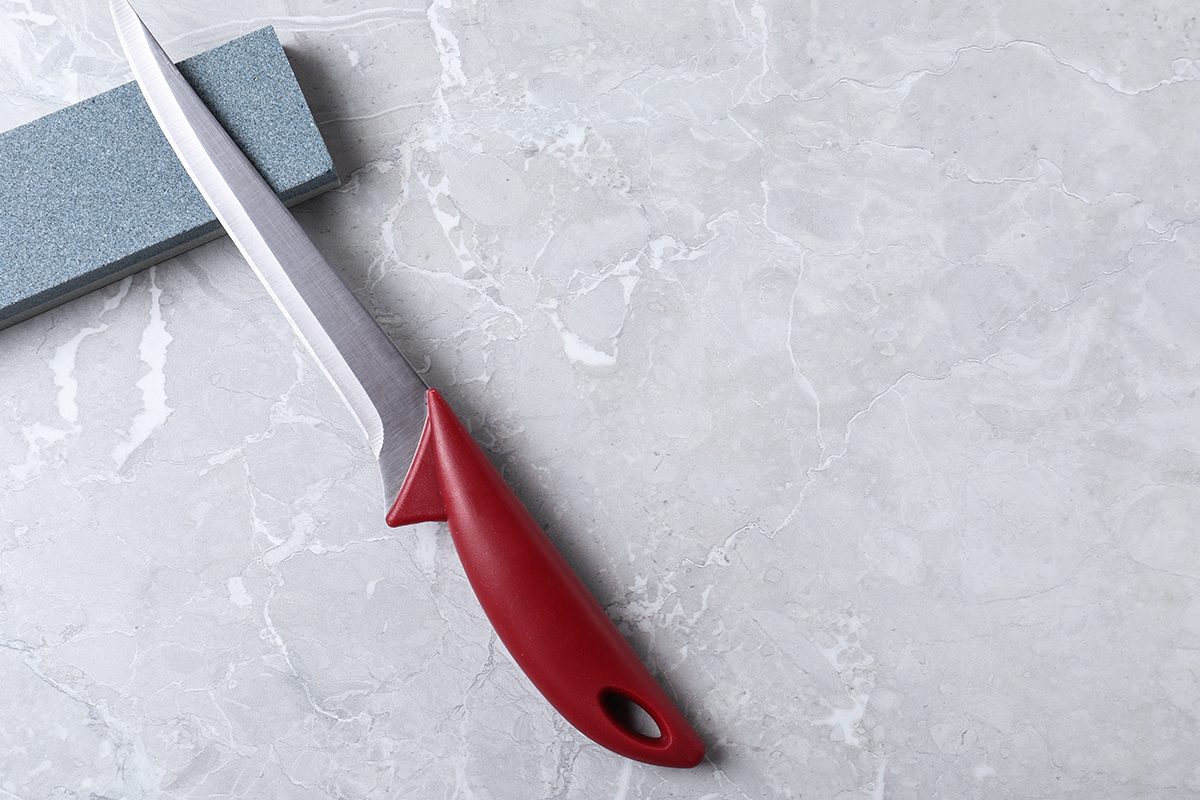
Japanese knives have harder blades, but they are more lightweight and sleeker than other variants. They call for frequent sharpening because of the high carbon content.
German knives possess a bolster connecting the blade and grip. They have more delicate steel. Unlike with Japanese knives, a uniformed look and versatility are crucial for persistent and heavy-duty work. As a result, you can experience balance and a smooth transition.
Click here to see this single bevel honesuki knife on Amazon.
What Knives Do Professional Butchers Use?
In addition to breaking and boning knives, you can explore other meat knives for various occasions and preferences.
- Carving knife
- Chef's knife
- Cleaver or butcher knife
- Fillet knife
- Salmon knife
- Santoku knife
- Scimitar or cimeter knife
How Do You Hone A Knife?
Sharp knives are safer than dull ones. The easy maneuver lowers the risks of slipping or injury. The information below will guide you on how to hone and sharpen your knives.
Honing
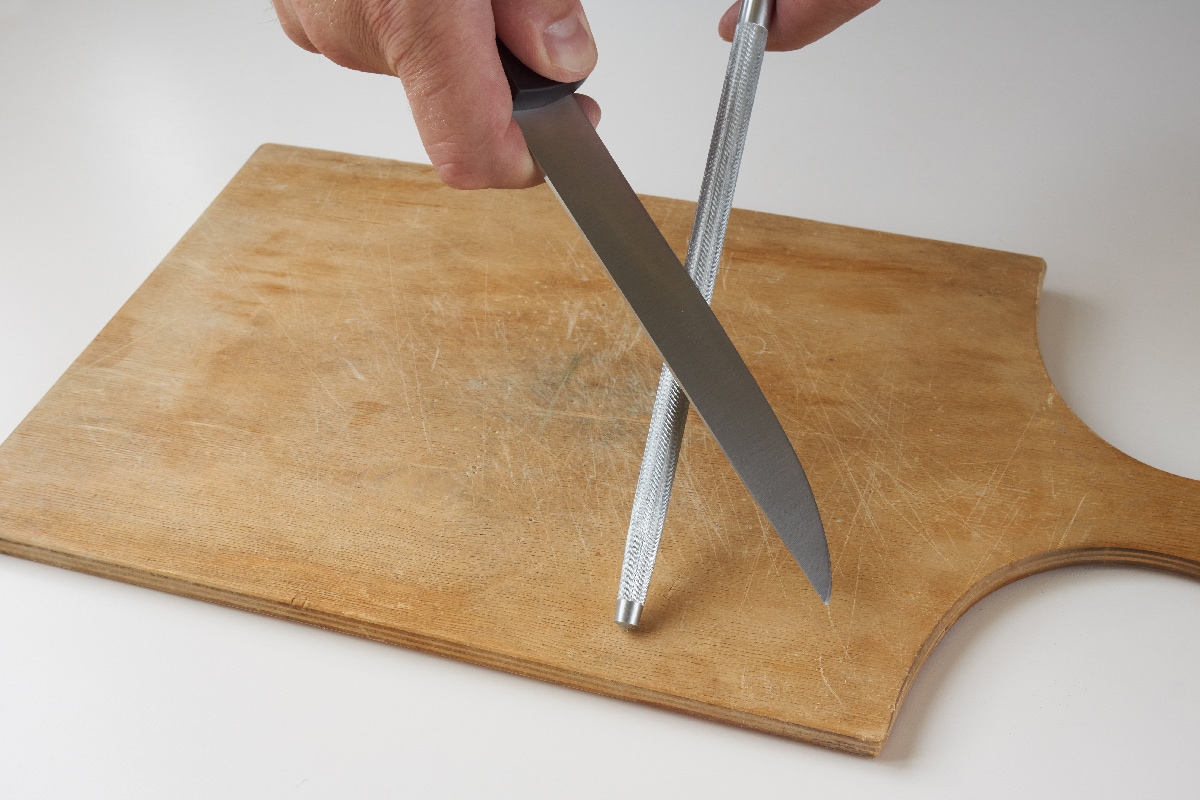
Honing helps maintain the shape of a knife. A honing steel is the tool used for this purpose. Manufacturers usually make the steel abrasive with chromium, ceramic, or diamond.
The length of a honing steel varies from 8 to 14 inches. Choose the size depending on your longest blade. Remember to hone before using your knives. Perform these simple steps to maintain your blades.
- Hold the steel with your non-dominant hand and the knife with the opposite one.
- Rub them against each other. Start from the base and work up to the tip.
- Maintain a 15- to 20-degree angle. It must be almost parallel to the steel. It can be inwards or outwards, as long as it is far from your body.
- For beginners, stand the steel upright and firmly on a chopping board or countertop with a damp rag above it. Run through each side of the blade alternately.
- Repeat the rubbing motions at least six times.
- Cut a piece of paper to check if the knife works smoothly.
- Wipe it with a cloth to remove any residue.
Click here to see this honing steel on Amazon.
Sharpening
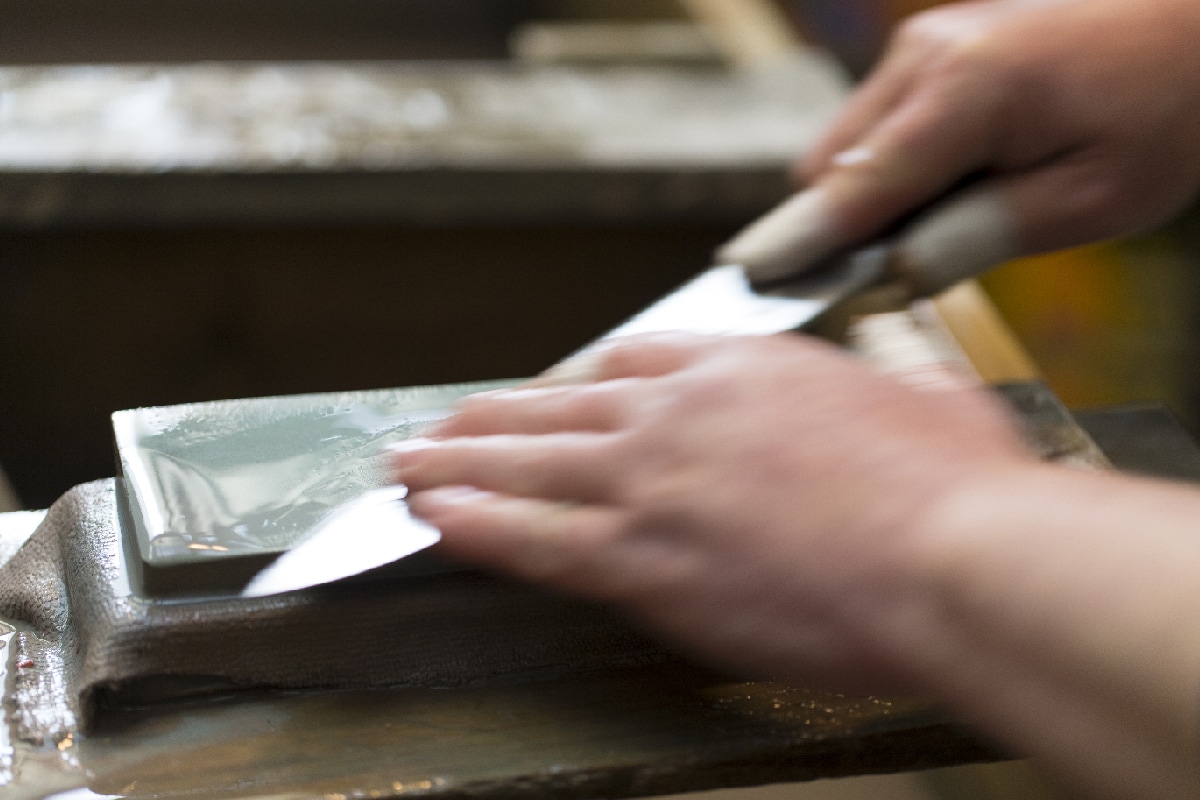
In contrast, sharpening gets rid of dullness in a knife. You can accomplish this by using an oil stone with an oil coating.
As with honing, observe the same angle and process. This technique is beneficial when the blade is dull. Whetting takes place afterward.
Click here to see this whetstone with two grits on Amazon.
Watch this clip about knife care to maintain your knives like a pro.
Where Should You Store Your Knives?

Below are a few storage ideas for boning, breaking, and other knives. Proper storage will help to preserve them.
Leather Roll
Storing your knives in a leather roll with pockets is convenient if you want to take them to another place. Since the roll is space-saving, traveling chefs prefer this option. You can incorporate one in your countertop drawer for added protection.
Click here to see this rustic knife case on Amazon.
Knife Block
Whether wooden or plastic, a knife block can protect your breaking and boning knives while keeping your countertop neat and clutter-free. One inconvenience to consider is the limited capacity of its existing inserts with varying widths.
Click here to see this bamboo block on Amazon.
Magnetic Holder
A magnetic holder mounted on your backsplash is ideal if you use knives and other metal utensils frequently. It can also add an industrial vibe to your kitchen.
The magnet will not damage or affect the knife's properties. However, home cooks in a forum noticed blemishes on the surfaces of their knives when attached to a magnetic bar. Scratches may also appear if two blades collide.
Click here to see this stainless-steel magnetic strip on Amazon.
Rice Grain Container
Opt for DIY knife storage if you struggle to fit your knives in a typical wood block. Fill a tall container with white rice grains.
This hack is practical, and you can easily change the container size to hold new blades in the future. Another creative storage alternative is forming a block from a bundle of old cookbooks.
Final Thoughts
Breaking and boning knives differ in various aspects, including size, shape, and function. Each one has benefits that can help you with your menu for the day. You should sharpen and hone your blades for efficient prepping and store them properly.
If you enjoyed this post, explore these articles about knives:
7 Types of Chef Knives You Should Know
How Long Do Kitchen Knives Last?


